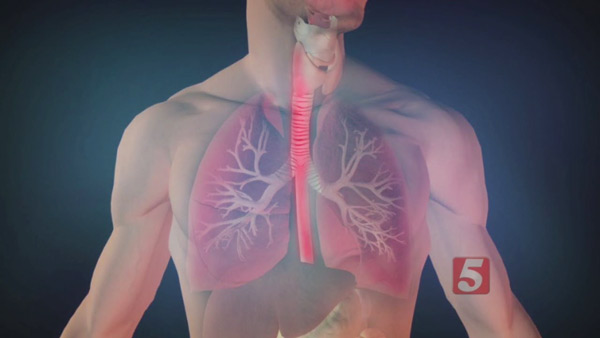
Car accidents, neck injury, smoking, and cancer can all cause irreparable harm to the trachea, the flexible tube that keeps us breathing normally. Researchers are developing new windpipes to help those who have serious or life-threatening damage and 3D printed tracheas could be medicine’s next big thing.
Researchers and surgeons are teaming up to see if a lab-grown windpipe helps animals breathe better. They’re hoping that what works for pigs will someday soon work in people.
Robert Lebovics, MD, FACS, Site Director for the Department of Otolaryngology at Mount Sinai St. Luke’s Hospital in New York told Ivanhoe, “An unstable airway is a potential time bomb, and it has to be addressed.”
Dr. Lebovics is an expert in diseases of the upper airway; he’s part of a team testing a 3D printed trachea.
The trachea or windpipe is the four-inch hollow tube connecting your voice box to the bronchi in your lungs. The tube can narrow or harden due to injury, or disease. And unlike other organs in the body, it can’t be replaced with another human organ.
Faiz Bhora, MD, FACS, Chief of Thoracic Surgery at Mount Sinai St. Luke’s Hospital in New York told Ivanhoe, “In the trachea, there is no good blood supply to be able to sew blood vessels together to effect a transplant.”
Drs. Lebovics and Bhora are looking at a viable replacement. Using 3D printing technology, researchers construct the tube or scaffold out of a biodegradable material, and then stem cells are placed inside.
“So the stem cells that we embed within our biologic trachea have been primed to turn into cartilage,” said Dr. Bhora.
Within 18 months, the scaffold is likely to disintegrate leaving the trachea in its place.
Dr. Bhora also said, “I think for a lot of patients it will be life-altering, life-changing, and in some patients, it’s going to be life-saving.”
Researchers say they have had success in animals. They believe human trials on the 3D printed trachea are about 18 months to two years away.
Contributors to this news report include: Cyndy McGrath, Supervising Producer and Field Producer; Cortni Spearman, Assistant Producer; Kirk Manson, Videographer and Brent Sucher, Editor.